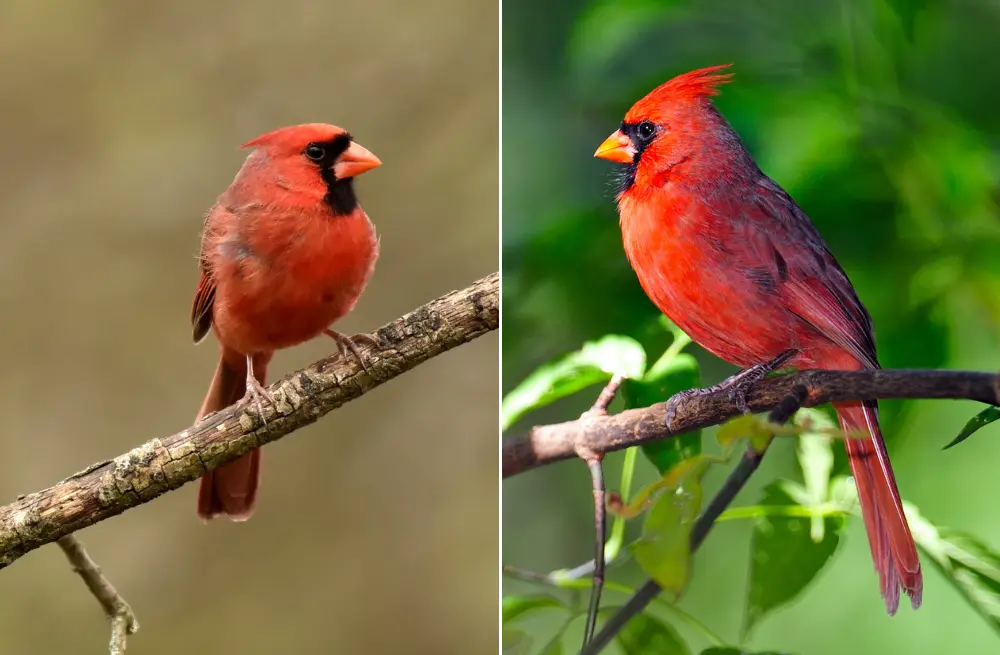Red-legged partridges (Alectoris rufa) have long been admired for their vibrant plumage and distinct red legs, capturing the attention of bird enthusiasts and researchers alike.
Among the many aspects of their behavior that intrigue us is their mating habits. One commonly asked question is whether red-legged partridges form lifelong partnerships.
The answer to this question is: No! Red-legged partridges do not mate for life. While they form strong bonds during the breeding season, these partnerships typically last only for that specific period.
Once the breeding season is over, red-legged partridges often go their separate ways and seek new mates in subsequent seasons.
Their focus is on finding suitable partners to ensure successful reproduction rather than maintaining lifelong commitments. However, during the breeding season, they display remarkable dedication and cooperation in building nests, incubating eggs, and rearing their offspring.
In this article, we will delve into the fascinating world of red-legged partridges and explore their mating behavior and get more insights about their bond.
Meet the Red-Legged Partridges
Red-legged partridges are medium-sized birds native to Europe, known for their reddish-brown plumage, intricate patterns, and striking red legs. They inhabit a variety of habitats, including agricultural fields, grasslands, and open woodlands. Their adaptability to different environments has contributed to their widespread distribution across Europe.
The Bonding Rituals
During the mating season, red-legged partridges engage in elaborate courtship rituals. Males display their vibrant plumage, perform intricate dances, and vocalize to attract potential mates. These displays not only showcase their physical prowess but also serve as a means of communication to establish bonds with females.
Building Strong Relationships
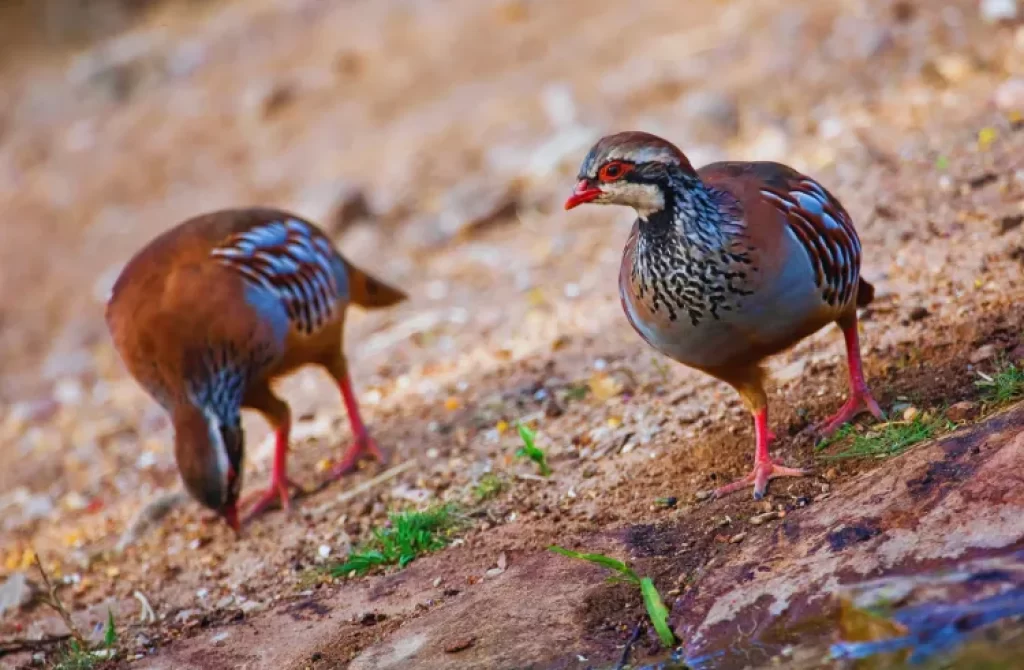
Red-legged partridges are known to form strong pair bonds. Once a male successfully attracts a female, they form a committed partnership for the breeding season. The pair engages in mutual preening, territorial defense, and foraging together, fostering a strong bond between them.
Nesting and Rearing Offspring
After forming a pair bond, red-legged partridges search for suitable nesting sites. The female constructs a nest on the ground, often concealed in tall grass or vegetation. Both parents take turns incubating the eggs, ensuring their warmth and protection. Once the chicks hatch, both parents actively participate in feeding and protecting their offspring.
Lifelong Commitment or Exceptions?
While red-legged partridges are known for their strong pair bonds, exceptions do exist. In some cases, individuals may seek new mates in subsequent breeding seasons, especially if their previous partner is no longer available. Additionally, environmental factors, such as changes in habitat or population density, can influence their mating patterns.
The Significance of Pair Bonds
Pair bonding plays a crucial role in the reproductive success and survival of red-legged partridges. The strong partnership between males and females ensures effective cooperation in raising offspring, maximizing their chances of survival in the challenging environment. This bonding also provides benefits such as increased foraging efficiency, improved territory defense, and enhanced predator vigilance.
How do red-legged partridges acquire their vibrant plumage?
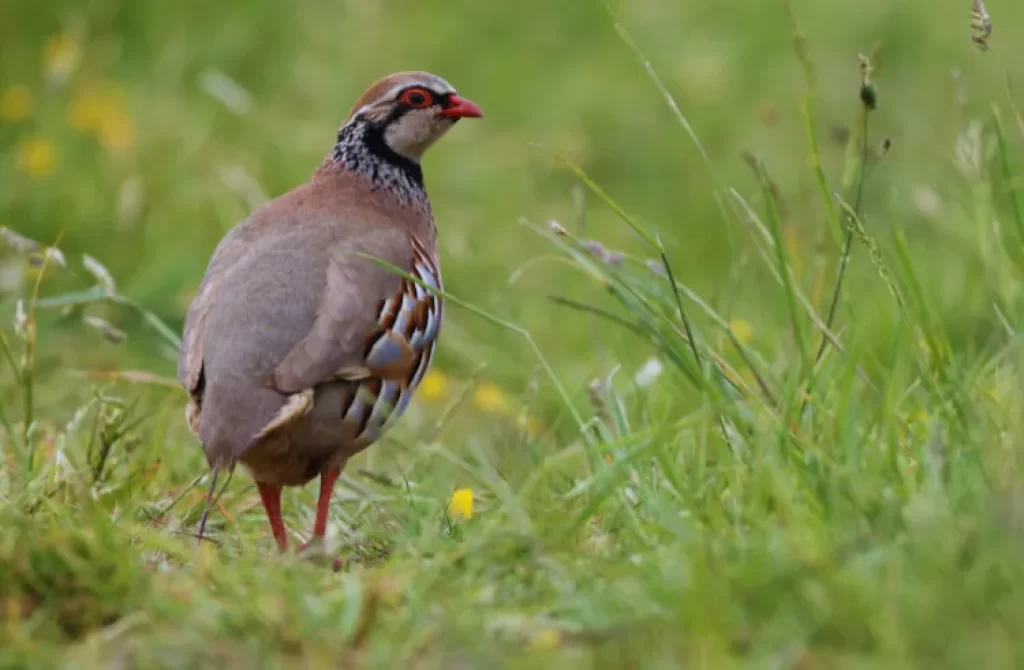
The vibrant plumage of red-legged partridges is a remarkable sight to behold! You might wonder how these beautiful birds acquire such stunning colors. Well, it’s a combination of nature and nurture.
Genetically, red-legged partridges have specific genes that determine the colors and patterns of their feathers. These genes give them their reddish-brown body feathers, the striking black and white markings on their face and neck, and, of course, their distinctive red legs. It’s like they were born with their own fashion statement!
But it’s not just about genetics. Red-legged partridges also take good care of their feathers. They engage in preening, which is like a spa day for birds. They use their beaks to clean, groom, and arrange their feathers, keeping them in top-notch condition. It’s their way of staying stylish and making sure they’re looking their best.
And let’s not forget about their diet. Red-legged partridges are selective eaters, enjoying a mix of seeds, grains, insects, and vegetation. This balanced diet provides them with the necessary nutrients for healthy feather growth. So, you could say that they are what they eat, quite literally!
Lastly, the environment plays its part too. Exposure to sunlight can enhance the vibrancy of their plumage, making the colors pop and shine. During the breeding season, male red-legged partridges may even display more intense and vivid plumage as part of their wooing tactics. It’s their way of saying, “Hey, look at me! I’m the most handsome partridge around!”
In the end, the vibrant plumage of red-legged partridges is a beautiful blend of genetics, grooming, diet, and environmental influences. It’s nature’s way of making sure these birds stand out in the crowd and leave us in awe of their stunning appearance.
Do red-legged partridges migrate?
Red-legged partridges are primarily non-migratory birds. They are known to establish territories in their preferred habitat and remain within those areas throughout the year. However, some populations may exhibit local movements in search of food or suitable nesting sites.
What is the diet of red-legged partridges?
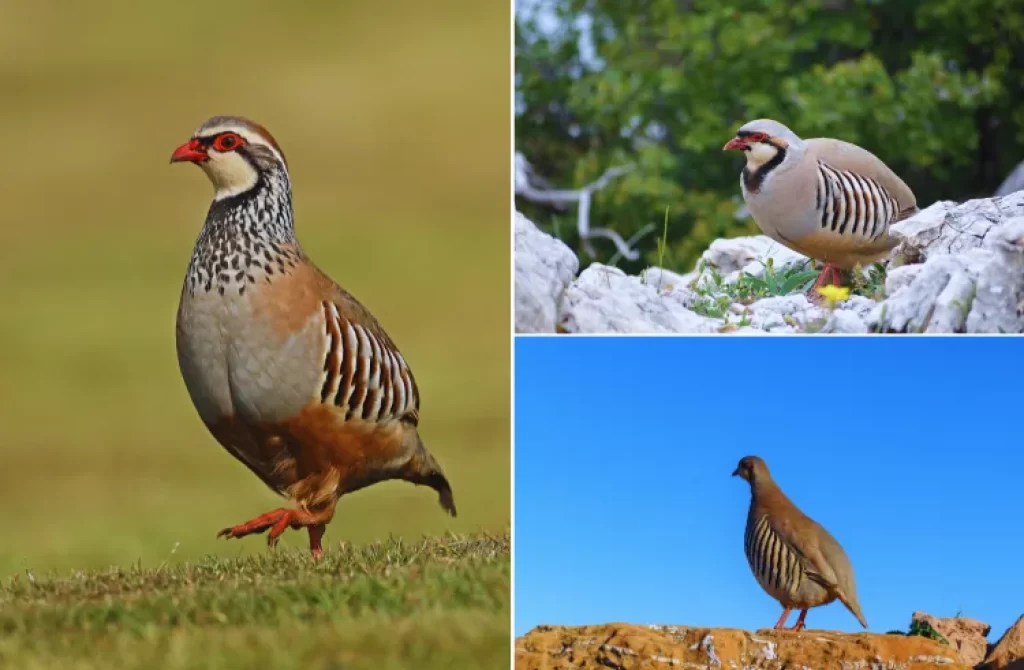
The diet of red-legged partridges consists of a variety of foods, including seeds, grains, insects, and vegetation. They are omnivorous birds and adapt their diet based on the availability of food in their habitat.
Seeds and grains make up a significant portion of their diet. They forage on the ground, using their sharp beaks to pick up seeds from grasses, cereals, and other plants. During the winter months, when seeds are abundant, they rely heavily on this food source.
Insects also play an important role in the diet of red-legged partridges, especially during the breeding season when they need to provide a protein-rich diet to their young chicks. They feed on a variety of insects, including beetles, grasshoppers, caterpillars, and spiders. Insects provide essential nutrients for their growth and development.
Additionally, red-legged partridges consume a range of vegetation, such as leaves, shoots, buds, and berries. They may also feed on agricultural crops like corn and wheat if available in their habitat.
The diet of red-legged partridges can vary depending on the season and the specific resources available in their environment. They are adaptable birds and can adjust their feeding habits to make the most of the food sources around them.
Overall, the diet of red-legged partridges is diverse and balanced, allowing them to meet their nutritional needs and thrive in their natural habitat.
How do red-legged partridges communicate?
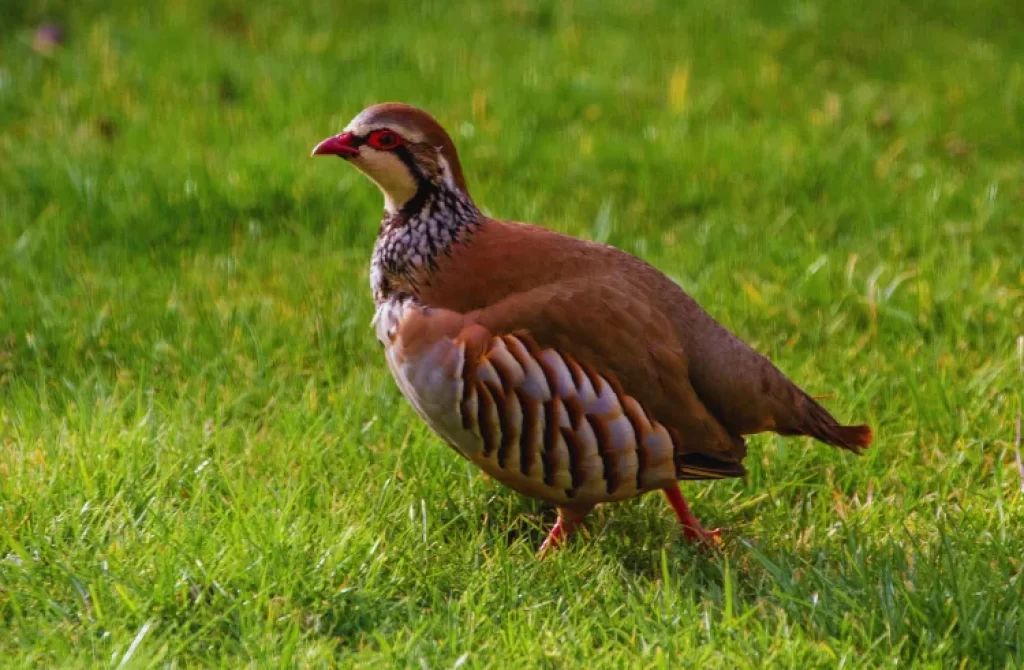
Red-legged partridges have fascinating ways of communicating with each other. They use a combination of sounds, body language, and visual displays to convey messages and interact with their counterparts.
When it comes to vocal communication, male red-legged partridges are quite vocal, especially during the breeding season. They emit distinctive calls that can be heard from afar. These calls serve multiple purposes, from attracting females to defending their territory and asserting their dominance among other males. It’s amazing how their unique calls can carry across the countryside!
But communication isn’t limited to just sounds. Red-legged partridges also rely on visual displays to get their message across. During courtship, the males put on quite a show. They puff out their chests, fan their tail feathers, and perform elegant movements to impress the females and establish their status. It’s like watching a beautiful dance unfold in the bird kingdom!
Body language is another important aspect of communication for red-legged partridges. They use their posture, movements, and gestures to convey different meanings.
A straight and upright posture can indicate defensiveness or territoriality, while a lowered posture with tail wagging shows submission. It’s like they have their own secret language of gestures and signals
What are the predators of red-legged partridges?
Red-legged partridges face predation from a range of predators, including birds of prey such as hawks and owls, terrestrial predators like foxes and mustelids, and ground-dwelling predators such as snakes and small mammals. Their alertness and ability to take flight quickly help them evade potential threats.
How long does the breeding season of red-legged partridges last?
The breeding season of red-legged partridges typically spans from late spring to early summer, with variations depending on geographic location. During this period, the birds engage in courtship displays, establish territories, and form pair bonds.
The exact duration of the breeding season can vary, but it generally lasts for several weeks. This window of time allows the birds to mate, lay eggs, and raise their offspring before the arrival of less favorable weather conditions or food scarcity.
How many eggs do red-legged partridges lay?
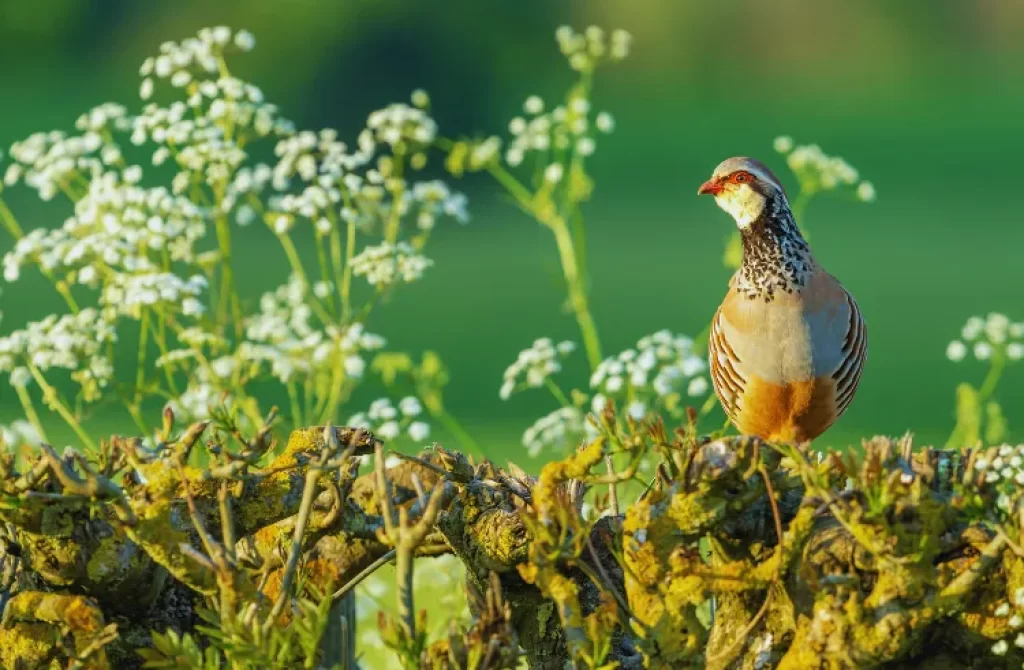
When it comes to reproduction, female red-legged partridges are prolific egg layers. On average, they lay a clutch of approximately 10 to 20 eggs, but the exact number can vary depending on factors such as environmental conditions and available resources.
Once the eggs are laid, both parents take on the important task of incubation, diligently sharing the responsibility of keeping the eggs warm and protected.
What is the lifespan of red-legged partridges?
Red-legged partridges have an average lifespan of 1 to 2 years in the wild. However, under favorable conditions with low predation pressure and ample resources, some individuals can live up to 5 years or more.
Conclusion
Red-legged partridges exhibit a remarkable level of pair bonding, often maintaining a committed relationship throughout the breeding season. While exceptions may occur, their strong partnerships contribute to the reproductive success and survival of the species.
By understanding the intricacies of their mating behavior, we gain a deeper appreciation for the complexity of their social lives and the importance of strong bonds in avian species.
So, the next time you encounter a pair of red-legged partridges, marvel at their dedication to one another and the beauty of their bond in the animal kingdom.





